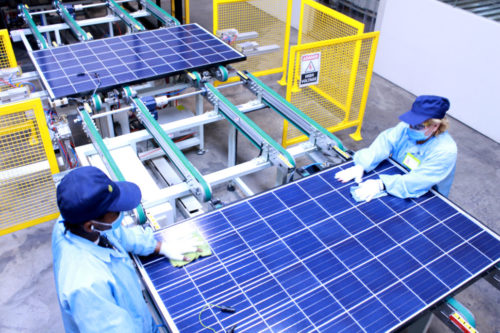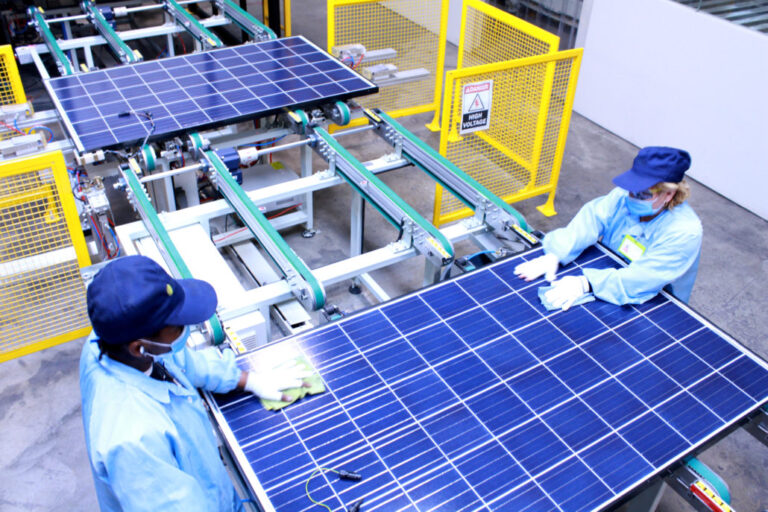Today the Ministry of Finance released the long-awaited further guidance regarding the domestic content bonus under the Inflation Reduction Act. Solar developers and installers who source iron and steel products and certain manufactured products from domestic producers can receive a bonus of up to 10% on the Investment Tax Credit (ITC) or Production Tax Credit (PTC) upon completion of projects. Projects can receive the domestic bonus if they meet the requirements and are smaller than 1 MWACcommenced construction before January 29, 2023, or meet applicable wage and internship requirements.

SunSpark USA
The Department of Treasury today further clarified project descriptions and created a new elective safe harbor that allows developers to rely on standard cost percentages provided by the Department of Energy to determine eligibility for the bonus credit.
No major changes to previously announced requirements have been revealed. As a review:
The domestic content bonus applies to projects constructed using required quantities of domestically produced steel, iron and manufactured products. Under this rule, a product is considered Made-in-USA if 40% of the cost to manufacture it (when used on projects that begin construction before 2025) is completed in the United States. That rule will increase to 55% for projects that start construction after 2026.
To receive the bonus, all steel and iron manufacturing processes used in major structural components must take place in the United States. This requirement does not apply to steel or iron sub-components (such as nuts, bolts, screws and clamps). Racks, posts, ground screws, and rebar used in foundations are considered “steel and iron products.”
Solar trackers, solar panels and inverters fall under the designation “manufactured products”. Project developers can track certain adjusted percentages of eligible components to meet the domestic content incentive. US-made battery packs (including cells, packaging, thermal management system and BMS), battery enclosures and inverters can also receive this adder.
The standard cost percentages can be found in the graphs below. Solar projects are divided into four categories: tracker projects, ground mounts with fixed tilt, roof projects with MLPE and roof projects with string inverters.
Battery projects are divided into two categories: grid-scale (greater than 1 MWh) and distributed (less than 1 MWh).
When choosing the safe harbor, projects with both solar and storage components will use a multiplier to accommodate the different nominal capacities (solar PV is kilowatt versus storage is kilowatt hour). Tracker projects will multiply by 0.57, fixed slope projects by 0.75, MLPE roof projects by 0.69 and string inverter roof projects by 0.99.
The Treasury Department and the IRS will continue to consider stakeholder comments and plan to issue further domestic substantive guidance to address issues not within the scope of this guidance, including potential offshore wind energy requirements. The administration is also evaluating possible options to boost domestic solar wafer production, a question raised by Senate Democrats earlier this year.
Abigail Ross Hopper, president and CEO of the Solar Energy Industries Association (SEIA), issued a statement: “The additional clarity on the Domestic Content Bonus Credit has been a top priority for SEIA as it is critical to provide manufacturers with certainty. indicate where they should invest. American communities. We appreciate the government’s approach to ensuring that this bonus credit helps downstream manufacturers in the short term, while we ramp up production of upstream components in the coming years. We would also like to commend the government for taking the first steps to clarify how residential and commercial installations can qualify for these incentives.”
Mike Carr, executive director of the Solar Energy Manufacturers for America (SEMA) Coalition, commented on the increased focus on domestic wafer manufacturing: “We are also encouraged to see that the Treasury Department recognizes the central role of ‘the goals of the IRA to Boost American Solar Energy’. production, including solar wafer production,” as they work on long-term guidance for this credit. Quickly and successfully transitioning this intent into domestic content guidelines is critical to investing in major facilities that support thousands of jobs, so we look forward to working with the government to produce workable guidelines as quickly as possible. Breaking China’s waffle manufacturing cartel is at the heart of a sustainable solar manufacturing supply chain in the US and we are very pleased to see the administration taking action to address this fundamental dynamic to take.”


